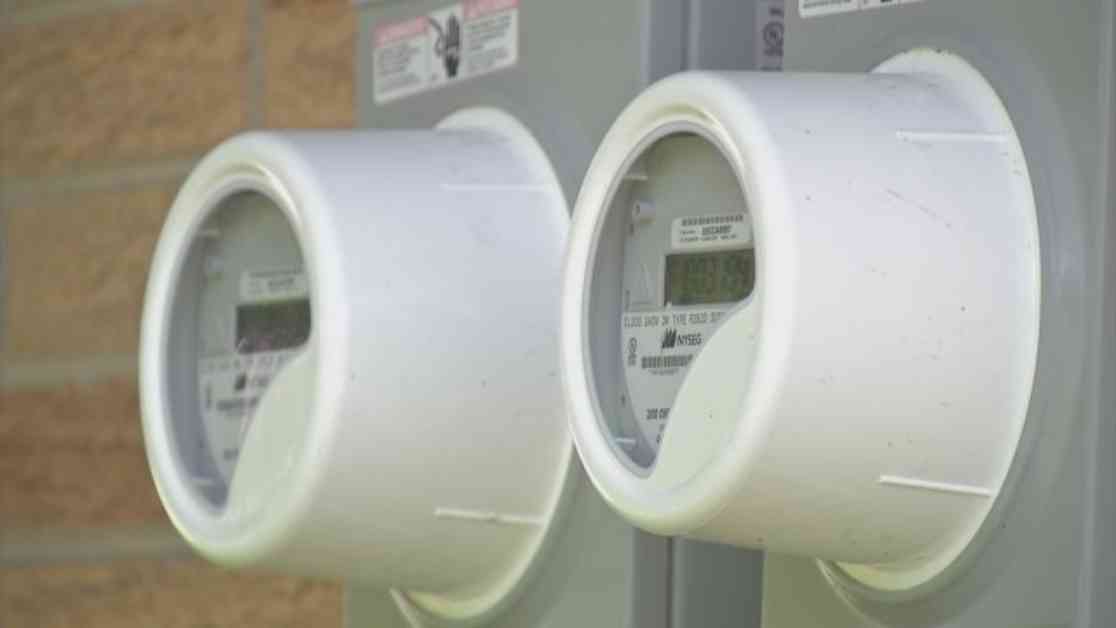How to Navigate NYSEG Bill Cost Increases: A Comprehensive Guide for Customers
In recent months, NYSEG customers across New York State have been experiencing significant spikes in their monthly energy bills, leaving many frustrated and seeking answers. The introduction of new smart meter technology by the energy provider has been at the center of this controversy, with residents pointing fingers at the meters for the sudden increase in costs.
Smart meters are designed to provide more accurate readings by transmitting actual usage data back to NYSEG, eliminating the potential for user error. According to NYSEG senior manager for communication Shelby Cohen, the smart meters play a crucial role in ensuring the reliability of billing processes.
“NYSEG and RG&E generate two million bills per month across the state, and only about one-half of one percent of customers need to call us to address any issues they see on their bills,” Cohen explained.
While NYSEG insists that the smart meters are not directly responsible for the higher bills, customers like Mike Treadway of Depew remain unconvinced. Treadway, a NYSEG customer, expressed his disbelief at the sudden surge in his bills despite making energy-efficient choices in his home.
“We don’t have central air, all LED lights are newer, and our appliances are energy-efficient, so it doesn’t make sense to see such a drastic increase in our bills,” Treadway shared.
Many customers have taken to social media platforms like Facebook to voice their concerns, with some attributing their bill issues directly to the new smart meters. One group member reported a significant spike in their bills after the installation of the smart reader, leading to bills that were three times higher than usual.
“This is an 800-square-foot apartment, and I’m rarely here to begin with. To see my bill triple is quite alarming,” Treadway added.
In response to customer complaints, NYSEG offers an opt-out option for those who prefer not to have a smart meter installed. However, opting out comes with a monthly charge of over $13 to cover the maintenance of legacy meters and associated infrastructure.
“We are required to assess the opt-out fee to maintain the meters and infrastructure necessary for reading them,” Cohen clarified.
Another issue raised by customers is the potential health concerns associated with the radio frequencies emitted by smart meters. NYSEG assures customers that the radio frequency levels are extremely low and comparable to those of common household devices like cell phones and microwaves.
Despite NYSEG’s efforts to address customer concerns, the situation has created a sense of powerlessness among customers who feel they have no say in the matter due to NYSEG’s monopoly in the area.
“NYSEG has a monopoly over the area, and we feel like we have no voice in this situation,” Treadway lamented.
With over 700,000 smart meters installed in New York State and more than 132,000 households falling behind on their utility bills, the issue of bill cost increases has become a pressing concern for many NYSEG customers. To address these concerns, NYSEG is hosting an in-person open house about smart meters on September 26 at the West Seneca Public Library.
For customers seeking assistance or more information, NYSEG’s customer support can be contacted at 1-800-572-1111.
Subheadings:
The Impact of Smart Meters on NYSEG Bills
Customer Concerns and Complaints
Options for NYSEG Customers: Understanding Your Choices
Navigating NYSEG Bill Increases: Tips for Customers
As NYSEG customers continue to grapple with rising energy bills and the introduction of smart meters, it is essential to understand the factors at play and explore potential solutions to mitigate the financial burden on households. By staying informed and actively engaging with NYSEG, customers can advocate for their needs and seek clarity on billing discrepancies.


